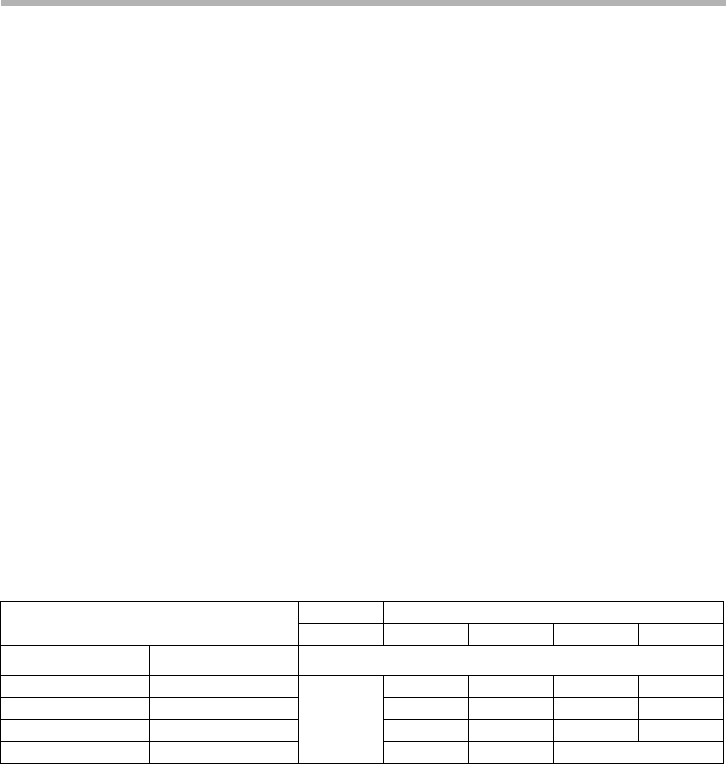
3
hearing protection must be used for appropriate con-
ditions. Ordinary eye or sun glasses are NOT eye
protection.
Tool Use and Care
15. Use clamps or other practical way to secure and
support the workpiece to a stable platform. Hold-
ing the work by hand or against your body is unsta-
ble and may lead to loss of control.
16. Do not force tool. Use the correct tool for your
application. The correct tool will do the job better
and safer at the rate for which it is designed.
17. Do not use tool if switch does not turn it on or
off. Any tool that cannot be controlled with the
switch is dangerous and must be repaired.
18. Disconnect the plug from the power source
before making any adjustments, changing
accessories, or storing the tool. Such preventive
safety measures reduce the risk of starting the tool
accidentally.
19. Store idle tools out of reach of children and
other untrained persons. Tools are dangerous in
the hands of untrained users.
20. Maintain tools with care. Keep cutting tools
sharp and clean. Properly maintained tools with
sharp cutting edges are less likely to bind and are
easier to control.
21. Check for misalignment or binding of moving
parts, breakage of parts, and any other condition
that may affect the tools operation. If damaged,
have the tool serviced before using. Many acci-
dents are caused by poorly maintained tools.
22. Use only accessories that are recommended by
the manufacturer for your model. Accessories
that may be suitable for one tool, may become haz-
ardous when used on another tool.
SERVICE
23. Tool service must be performed only by qualified
repair personnel. Service or maintenance per-
formed by unqualified personnel could result in a risk
of injury.
24. When servicing a tool, use only identical
replacement parts. Follow instructions in the
Maintenance section of this manual. Use of unau-
thorized parts or failure to follow Maintenance
instructions may create a risk of electric shock or
injury.
USE PROPER EXTENSION CORD: Make sure your
extension cord is in good condition. When using an
extension cord, be sure to use one heavy enough to
carry the current your product will draw. An undersized
cord will cause a drop in line voltage resulting in loss of
power and overheating. Table 1 shows the correct size to
use depending on cord length and nameplate ampere
rating. If in doubt, use the next heavier gage. The smaller
the gage number, the heavier the cord.
SPECIFIC SAFETY RULES
USB085-2
DO NOT let comfort or familiarity with
product (gained from repeated use)
replace strict adherence to metal cutter
safety rules. If you use this tool unsafely
or incorrectly, you can suffer serious per-
sonal injury.
1. DANGER! Keep hands away from cutting area
and blade. Keep your second hand on auxiliary
handle, or motor housing. If both hands are hold-
ing the tool, they cannot be cut by the blade.
Keep your body positioned to either side of the
saw blade, but not in line with the saw blade.
KICKBACK could cause the tool to jump backwards.
(See “Causes and Operator Prevention of Kick-
back”)
Do not reach underneath the work. The guard can
not protect you from the blade below the work. Do
not attempt to remove cut material when blade is
moving.
CAUTION: Blades coast after turn off. Wait until
blade stops before grasping cut material.
2. Check lower guard for proper closing before
each use. Do not operate tool if lower guard
does not move freely and close instantly. Never
clamp or tie the lower guard into the open posi-
tion. If tool is accidentally dropped, lower guard may
be bent. Raise the lower guard with the Retracting
Lever and make sure it moves freely and does not
Table 1. Minimum gage for cord
Ampere Rating
Volts Total length of cord in feet
120 V 25 ft. 50 ft. 100 ft. 150 ft.
More Than Not More Than AWG
0 6 18 16 16 14
6 10 18161412
10 12 16 16 14 12
12 16 14 12 Not Recommended


















